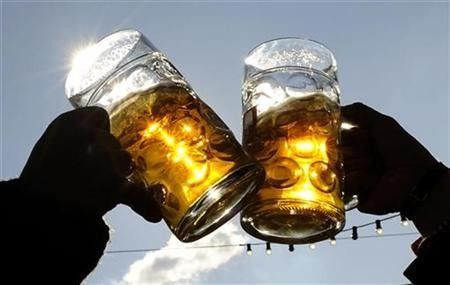Doctor Uses Ale Test to Detect Beer Ingredient in Drink-Drivers

Alcohol-related deaths and accidents have declined significantly since 2008, but authorities continue to face particular problems on drink-drivers. Dr Luke Rodda, a toxicologist at the Victorian Institute of Forensic Medicine, intends to improve blood alcohol content detection to help law enforcers determine whether drunk driving motorists have been drinking wine or beer. His research has led to the discovery of a forensic test that could ascertain if an individual has been drinking beer-the "ale test."
In Dr. Rodda's work, he indicated that 60 percent of alcohol-related deaths in Victoria were associated with beer consumption. He also found out that beer had a certain content that can be traced in the drinker's bloodstream, the compound called iso-alpha acid. Dr. Rodda said that the presence of this compound can be detected with a drink of ale. If the drinker's blood alcohol content reached 0.05g/100ml, the indicators will be present in the blood and urine for a duration of six hours. He also noted that some beer brands have a modified version of the compound, particularly those contained in light-coloured bottles.
During the three-year study, Dr. Rodda analysed how drunk driving offenders manage to use the hip flask defence to escape DUI charges. With his new discovery, not only would the police be able to test the blood alcohol content (BAC) of drink-drivers, they could also determine if the motorists have been drinking beer. From 2008 to 2012, the number of drivers and riders killed due to drink-driving has dropped to an average of 40 per year according to the Transport Accident Commission. These casualties had Blood Alcohol Content (BAC) greater than 0.05g/100ml. Since 1997, Victoria Police have used the breathalyser on more than 20 million motorists and passengers at Booze Bus operations. Around 70,000 drinkers were reported to have high blood alcohol concentration. Mortality rates declined from 38 percent in 1987 to 24 percent in 2012.
Dr. Rodda's next quest would be testing wines and spirits for unique compounds that could be traced in the human body as well. New findings could help in handling reported cases of drink spiking. Spiking is on the rise and it victimizes both men and women. This prank is prohibited in all Australian states and territories. Lawbreakers can be fined or imprisoned for two to 25 years. In Victoria, spiking of someone else's food or drink is considered an offence even if the victim does not consume the food or beverage.




















